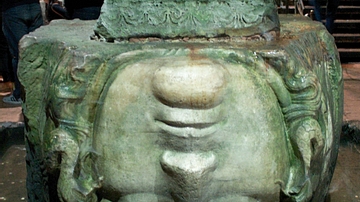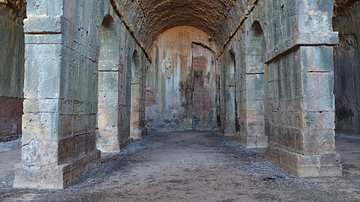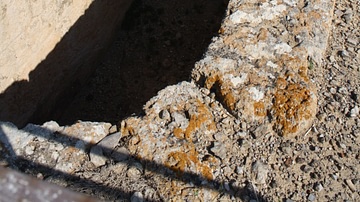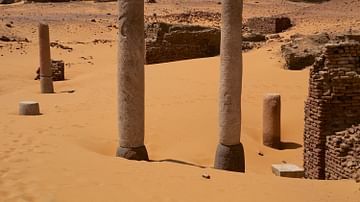Server Costs Fundraiser 2024
Illustration
Located across the Hagia Sophia Museum, Yerebatan Sarayi is also known as the Basilica Cistern because of a basilica that was once located nearby as a cultural centre. It is the largest surviving underground cistern of Istanbul. Fatih Cistern, St. Sophia Cistern and Theodosius Cistern are some of the 80 cisterns that supplied water in Constantinople.
Basilica Cistern was repaired by Justinian in the 6th century CE and came to its current state after a fire in the Nika Riot. Before that, it’s believed that it had a porticoed courtyard with marble columns. The cistern was used to supply water which was carried from the Belgrade forest via the Valence Aqueduct. The water was used for the Great Palace, especially during summer time, then the Ottomans used it for the Topkapi Palace.
Basilica cistern has 336 columns laid out in 12 rows of 28. They are made of marble and granite, most of which are Corinthian style. Some of the columns are believed to have been taken from the Forum of Theodosius.
Cite This Work
APA Style
Team, H. S. R. (2018, January 24). Columns of Basilica Cistern, Istanbul. World History Encyclopedia. Retrieved from https://www.worldhistory.org/image/7968/columns-of-basilica-cistern-istanbul/
Chicago Style
Team, Hagia Sophia Research. "Columns of Basilica Cistern, Istanbul." World History Encyclopedia. Last modified January 24, 2018. https://www.worldhistory.org/image/7968/columns-of-basilica-cistern-istanbul/.
MLA Style
Team, Hagia Sophia Research. "Columns of Basilica Cistern, Istanbul." World History Encyclopedia. World History Encyclopedia, 24 Jan 2018. Web. 27 Jul 2024.






